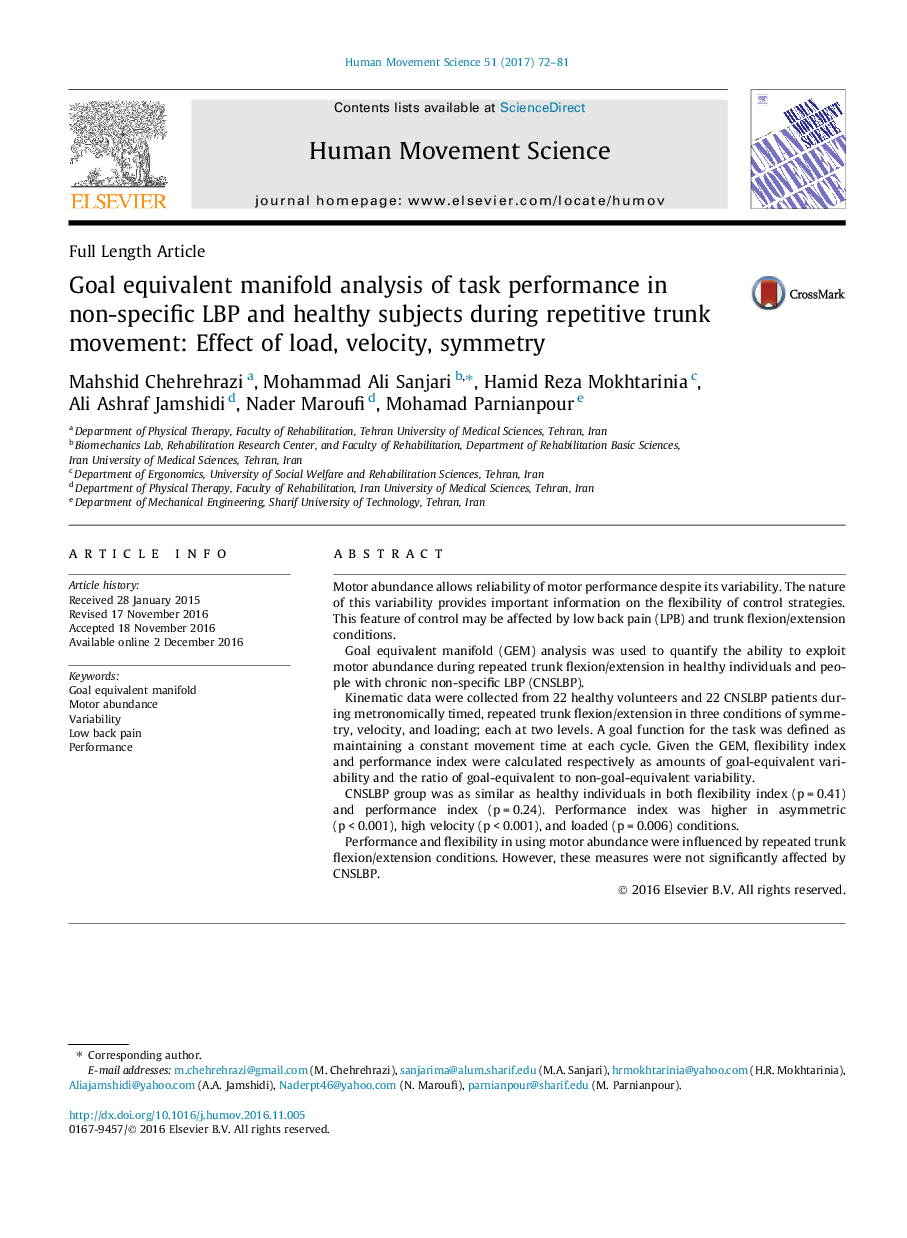| کد مقاله | کد نشریه | سال انتشار | مقاله انگلیسی | نسخه تمام متن |
|---|---|---|---|---|
| 5042023 | 1474214 | 2017 | 10 صفحه PDF | دانلود رایگان |

- Ability to exploit redundancy was quantified using GEM analysis.
- GEM analysis was conducted on individuals with and without NSLBP.
- NSLBP group was as flexible as healthy controls in exploiting redundancy.
- Ability to exploit redundancy was influenced by trunk movement conditions.
- Conditions of trunk movement had similar effect on GEM measures of both groups.
Motor abundance allows reliability of motor performance despite its variability. The nature of this variability provides important information on the flexibility of control strategies. This feature of control may be affected by low back pain (LPB) and trunk flexion/extension conditions.Goal equivalent manifold (GEM) analysis was used to quantify the ability to exploit motor abundance during repeated trunk flexion/extension in healthy individuals and people with chronic non-specific LBP (CNSLBP).Kinematic data were collected from 22 healthy volunteers and 22 CNSLBP patients during metronomically timed, repeated trunk flexion/extension in three conditions of symmetry, velocity, and loading; each at two levels. A goal function for the task was defined as maintaining a constant movement time at each cycle. Given the GEM, flexibility index and performance index were calculated respectively as amounts of goal-equivalent variability and the ratio of goal-equivalent to non-goal-equivalent variability.CNSLBP group was as similar as healthy individuals in both flexibility index (p = 0.41) and performance index (p = 0.24). Performance index was higher in asymmetric (p < 0.001), high velocity (p < 0.001), and loaded (p = 0.006) conditions.Performance and flexibility in using motor abundance were influenced by repeated trunk flexion/extension conditions. However, these measures were not significantly affected by CNSLBP.
Journal: Human Movement Science - Volume 51, January 2017, Pages 72-81